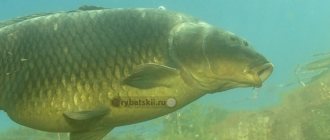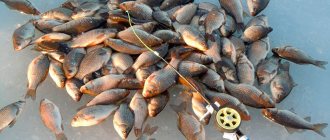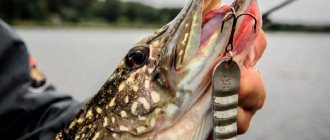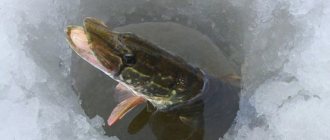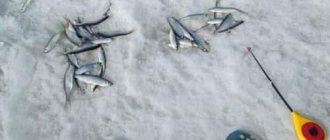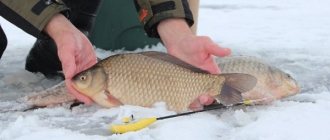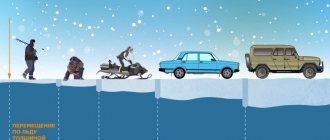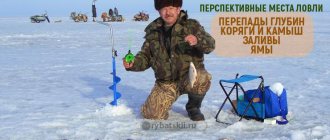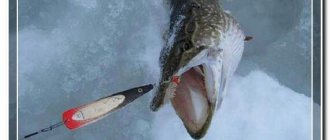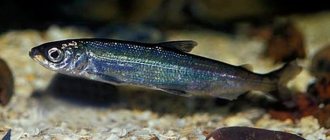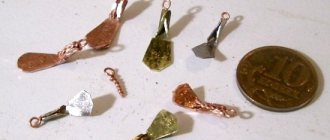The time for winter fishing is finally coming. Especially, I really want the first ice to consolidate .
Initially, everyone asks each other where the first ice has already formed on the river and where they can go to establish a fishing spot. First they inspect small lakes, then go to larger bodies of water. The most exciting and interesting time is coming. As a rule, with the arrival of the first cold weather, fishing begins to be intensively caught. She actively responds to feeding, and rarely does a fisherman return home with a small catch. By the way, a strong appetite in fish does not last long, only about two weeks. At this time, the fish is looking for suitable places for wintering. If you are lucky enough to find locations, then you need to remember them so that you can then easily find them. Check out winter fishing on the first ice in the video. First ice and perch
How to determine the place where the fish will bite well
A barrel of honey is never complete without a fly in the ointment. The time of establishment of the first ice cover is usually accompanied by a good bite, but there is one important point - the insignificant thickness of the ice. Therefore, it can be very difficult to approach the fishing point. Ice does not form at the same thickness everywhere. First, backwaters, coastal zones, and places protected from the wind are covered with ice. Fish do not always live in such places; they prefer open areas where the water is a little warmer. But in coastal places there is enough food left. In most cases, the fish chooses the border between open water and ice-covered water, constantly visiting places with abundant food.
Where to find a cool place
There is always a fly in the ointment in a barrel of honey. First ice, as a rule, is a good bite, but the thickness of the ice is too thin and getting to the fishing spot can be very difficult and often dangerous . Ice does not form equally on the entire body of water at once. The first to freeze are the coastline, creeks, and windless places. But sometimes fish leave these places because in open areas the water is a little warmer. But there is still a lot of food left near the coastline. Often the fish prefers to be on the border between open water and already frozen water, regularly swimming to the shore to feed.
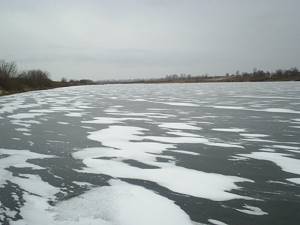
The first ice has formed
Disguise methods
At this time, the fish is extremely careful. The most important thing is not to scare her. You should move on the ice quietly, without noise. If she notices you, she will swim into the depths. It is completely useless to catch fish in shallow places without camouflage. If there is no snow on the ice, then the young ice is like glass, so you need to cover the place where you are fishing with something, for example, white dense material. If there is snow, it is not cleared before the hole, but where the snow has been trampled, it is powdered. It is also better not to completely clear the drilled holes of ice crumbs.
To hide, fish often find themselves in areas with darker colored ice. The most adhesive places are located right on the border of ice and clean water, but the danger of falling through the ice is very high. You need to look for fish in the first ice where there are flooded trees and snags, or on dumps under a steep bank. The fish stands near the reeds, or rather, on its border, and if there is also dark ice nearby, then you will definitely come across a catchy spot there.
Safety first
There are extreme sports enthusiasts who literally play on the ice using poles. However, there is no need to put your life in danger. Winter fishing should begin when the ice thickness reaches and remains at 5 - 6 centimeters. But, if at this time there is a short-term increase in air temperature, then it is better not to tempt fate, since the ice may not withstand it. By the way, at this time it is better to go fishing in a group of several people and have a rope and an ice pick with you. The ice pick is used to check the thickness of the ice covering. In addition, there is no need to go to obviously dangerous places where holes and cracks are clearly visible.
Do not use an ice pick or motor drills to make holes, as this tool creates a lot of noise. Use a silent hand-held ice auger for drilling.
Tackle for first ice
In winter, in the first ice, the main methods of fishing are fishing with bottom spoons, fishing in the water column and other methods.
We also recommend reading:
How to properly tie a jig to a fishing line Winter fishing for gudgeon with a jig How to catch taimen in winter Winter ice pick: purpose, types, making the tool yourself
The most optimal bite time
Fish bite on the first ice throughout the day, but at different times. Any predatory fish, be it pike perch, perch or pike, is particularly active. They stock up before the winter cold. Bream, burbot, roach are also fed for future use. At this time, fish are found in almost any place, rising closer to the ice, in the middle water column, near the bottom. A good assistant in planning a fishing location is an echo sounder. With its help, you can navigate the depth without drilling holes, and therefore there will be less noise, which is so unpleasant for the fish at this time.
Pike fishing
Pike, like any other fish, when under ice, feels a lack of oxygen. Therefore, for successful fishing, you need to look for it in places where there is at least some movement of water. The second condition is shallow water. This is explained by the fact that small fish - food for pike - have moved to shallow places, and the pike itself begins to actively hunt. At this time, it can be caught at almost any time of the day.
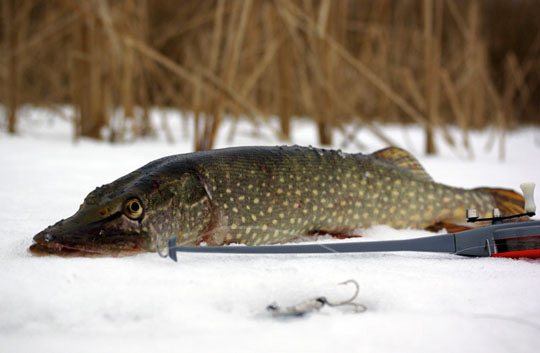
The best fishing tool for pike is a girder. You can and even need to place them in different places - near snags and on a clear day. Pike is a very cautious fish. Therefore, on ice you need to behave accordingly: don’t make noise, don’t move around too much.
Fishing equipment
When fishing on first ice, the gear should be light. According to experienced fishermen, you need to use a simple balancer or spoon. There should be different spoons available: flat, light, heavy, voluminous and narrow.
Experiment when fishing with different types of spoons. The best options are hand-made specimens brought to perfection by many years of experience. The vertical spinner shows good results at shallow depths and in thickets. Of course, you can’t do without jig tackle, but it mostly catches small fish.
Roach fishing
When fishing for roach, it is better to use jigs of different shapes. The shape depends on the specific body of water. Since the roach is cautious, the twitching should be done smoothly. There are more chances to catch this fish in deep water, especially if you use various types of bait. It is possible that the fisherman will see the result of feeding the next day, and not immediately. It is important to learn how to hook correctly: the roach is in no hurry to immediately swallow the bait. Therefore, the ability to hook in time is especially valuable when hunting for roach.
Catching perch on the first ice
This time is among the most suitable for perch fishing. According to the degree of formation of ice thickness, the perch descends to depth. Catching perch on the first ice is characterized by an active bite. There are times when you can catch more than a dozen fish in one place. Often, when lowering the jig, it does not reach the bottom, falling straight into the perch’s mouth, after which it is not so easy to release it. When searching for it, you need to make constant movements. Perch can be found on the edges, which can be reached on thin ice. Small fish react during the day, usually near the shore in the seaweed, where its prey is still found. Larger representatives live on the border with vegetation. Large fish are caught on the first ice in the morning and evening, in the dark. As a rule, perch hunts in a school. Smaller individuals prefer jigs, larger ones choose bait similar to the main food - fry, that is, a spoon or balancer. Perch pays attention best to a spinner rather than a small jig. The main thing is to catch perch without pausing. An energetic predator, as soon as it loses sight of the bait, immediately moves to other places to search. In this regard, as soon as a flock is discovered, you need to immerse the bait in the hole more often.
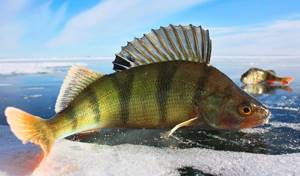
Gear for fishing on the first ice and expected catch
Fishing gear should be light in weight. These can be different spinners or a balancer. The best lure is homemade. Over time it is brought to perfection. At shallow depths, a vertical spinner works well.
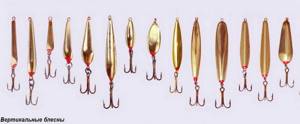
To catch small fish, jig tackle and a fishing rod with a nod are used. It is also used when fishing for perch. First ice is the time to use various fishing gear.
Float rod
Ice fishing requires the use of several fishing rods. Not the last place among them is the float. It consists of equipment and a filly, has a compact size, and can even fit in your pocket. The gear is used for catching bream, roach, silver bream, gudgeon, perch, and ruffe. Fishing on the first ice uses natural bait and groundbait.
Groundbait in the form of bloodworms is very common. You need to put 1-3 larvae on the hook and lower it into the water. The bite is determined by the float that floats in the hole. A hook is made with the hand.
A fishing line with a thickness of 0.08-0.12 mm is wound onto a reel located on the fishing rod. Float fishing on the first ice can bring prey in the form of large fish.
Tackle with jig and nod
In winter, jigs and nods are often used. This fishing rod looks like a float rod. The only difference is the nod, which is used instead of a float. The nod is not just a bite signal, it gives the jig additional movement. The fishing rod is used on the first ice when fishing for perch, bleak, roach, silver bream, and white bream.
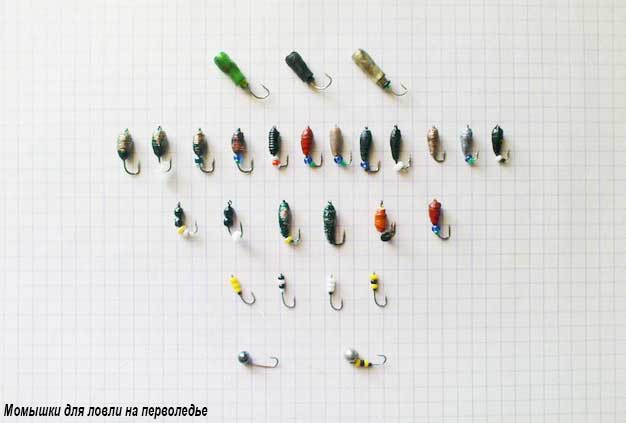
The jig can be attached or unattached. The result of fishing is influenced only by the play of the jig.
Sheer trolling rod
Fishing on the first ice is also done using vertical lures. For this, a balancer or a spinner is used. The fishing rod has a longer rod and thicker line. The tackle is intended for catching trout, pike perch, perch, pike, and bream. The bait is spoons or a balancer. A large spoon can be used to catch a large predator.
When flashing, sharp swings of the hand are made. As a result, the spoon takes off from the depths and falls again. The moment of the bite is determined by the behavior of the nod. It is advisable to equip the fishing rod with a reel so that at the right time you can give the fishing line or part of it to the predator.
Winter girders
The predator is also caught using girders in winter. Pike, perch, pike perch, burbot, trout and other fish species bite on them. All available types of vents have the same operating principle. A fishing line with a thickness of 0.2-0.4 mm is wound onto the reel. A hook and sinker is attached to the end of the line. The tackle is installed on the hole, the live bait on the hook is lowered into the water. A flag serves as a bite signal. The fisherman can only wait and fish out the catch from the ice hole. You can equip the vent with your own hands and for free.
Pike
In the first ice, pike lives near dumps and edges. Actively responds to the spinner. When fishing, the following baits are used: pieces of worm, perch eye and bloodworms. A small balancer may also be involved. It attracts attention well, even a large pike can bite. And fishing will become more fun. Winter fishing with live bait and bait is also popular. The ice has not yet reached the required thickness, so drilling through it is not difficult, and the pike is very active. By the way, it is best to collect live bait in the same reservoir.
Pike perch are also biting well at this time. In search of food, it moves long distances, exploring new territories. The video tells about winter fishing on the first ice for pike perch.
In winter, catch pike perch on the first ice, Bulgarians!
In winter, you need to catch roach in active search mode. A fishing rod with a nod and a jig is suitable for this.
Features of fishing from the first ice
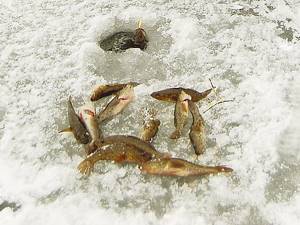
Photo by the author
November in the history of fishing was initially given the place of one of the most important periods of hunting for fish, since this month was considered the period of formation of the first ice. But climatic conditions are changing: for example, if twenty years ago Moscow fishermen opened the ice fishing season in mid-late November, and the most desperate ones sat on the ice on the fifth of November, now this rarely happens.
The very interpretation of the concept of first ice is very vague. Either this is the very first ice, which melts every other day, or it is ice that can already support the weight of the fisherman. Ice appears and melts under the influence of heat, wind, and rain. This is repeated several times during the month. And when safe ice forms, it turns out that the “first ice” has already passed for the fish, and the expected zest will have to wait at least until next year.
The instability of the surface of a reservoir, determined solely by the weather, has a negative impact not only on the health of fishermen, but also on the behavior of underwater inhabitants. Fish, which, when the water cools to a certain temperature, falls into a state close to suspended animation, may have the easiest time of all. She loses activity and weather changes don't bother her much anymore. But perch, roach, pike, bream and other “all-season” fish begin to behave warily. And this painful state stretches over time.
It is well known that when ice freezes quickly, many fish experience some kind of shock. Some of them even rise, press themselves against the ice and stand like that for several hours, without moving or going into the depths. This happens when the ice rises together, and the next morning we observe that first ice, which is described in classical literature. One to three days after ice formation begins the period of highest fish activity during the winter. If the formation of ice stretches, it rises at night and melts during the day, then throughout this entire period there is no bite.
Small ponds and forest reservoirs are the first to become available for fishing: rotan and roach-perch. And not only because the ice freezes up faster here, but also because the bite on small bodies of water lasts only two to three days, and only if you’re lucky with the weather. We need to be in time. Fishing in the first few days after freeze-up is not only dangerous, interesting, and rewarding, but also non-standard. And catching each fish has its own characteristics.
In the first week after ice formation, rotan is very active. The largest specimens are found on the first ice. From year to year, rotan after freeze-up concentrates in very specific and unchanging places. Most likely, this is due to his biology. The fact is that rotans survive even in reservoirs that freeze to the bottom in winter. And the only way for rotan to escape is not to bury itself in silt, but to form a school ball of individuals that are saved from freezing by a single protective layer of mucus. The temperature depression of the mucus does not allow the fish ball to freeze through. On the first ice, rotans adhere to the edge of underwater vegetation. After the ice thickness reaches ten centimeters, a flock begins to form, which moves to the deepest place. Like perch, rotan is not at all afraid of the noise of an ice drill overhead, so I drill a dozen holes in a row in some direction, usually from the shore to the middle of the reservoir. After this, they begin to check the holes. It takes about a minute to check each hole.
I adhere to the fact that the optimal tackle for the first ice is a winter vertical spinner. It gives powerful vibrations that attract rotan. The shape and color of the spoon do not matter much, since the game is not the main thing. Although, it seems to me, it is safer to choose a wide and short spoon, with a body length of no more than three centimeters. Spinner spoons for rotan are equipped with large single soldered hooks; spinners equipped with double soldered hooks are also good, but it makes sense to use them when catching record-sized rotan with large bait. Soldered hooks are better in terms of hooking reliability. The fact is that rotan does not grab the bait greedily, as is commonly believed, but deeply, completely taking it into its large mouth. A spoon with a soldered hook is easier to “swallow.”
Very, very often, rotan first tries the bait, nibbles it and only then may or may not grab it, so it is better to put bait on the hook. In winter, pieces of fresh beef and skin from raw chicken have proven themselves very well as bait when catching large rotan. Rotan unmistakably recognizes the smell of this meat. It is advisable to change the bait every five minutes, otherwise the bait will lose its attractiveness. A very good bait for large individuals is the meat of the same rotan.
As for bait, its use again makes sense when hunting for the largest trophies. A proven bait will be finely chopped rotan meat itself. After rotan, it’s time for perch. At the very beginning of the winter season, the behavior of perch differs little from its behavior in late autumn. The fish continues to stick to shallow water. Horsetail thickets and sand spits deserve special attention. Thickets of underwater horsetail are clearly visible visually. Perch tends to come here because young fingerlings find refuge here. The fingerlings will stay in such places until the lower edge of the ice falls to the bottom. Fishing here on the first ice is very dangerous, since the ice near the plants is the weakest. The only “good thing” is that the depth is shallow and it’s difficult to drown.
Now, as in the fall, perch hunt in open water in schools, periodically forming “boilers”, but under the ice, driving the fry to shallows and shallows. Small perch firmly settle near underwater vegetation. This is also where the bulk of the fish are located, no larger than the palm of your hand, although a significant portion of such individuals will be distributed over almost all depths of the reservoir. The biting intensity of perch after the formation of ice becomes little dependent on both the direction of the wind and its strength. Much more important is the illumination, and therefore the hours of fishing. Since small and medium-sized perch mainly rely on their vision when hunting, a “running” cloud can temporarily stop the bite. Good visibility in the water during the period of first ice, especially in sunny weather, also has its downside. The perch perfectly sees not only the bait in the water, but also the angler above his head. Therefore, if the ice is transparent, then camouflage is required. The most reliable action is to drill a hole, place a fishing box near it, sit on it and freeze. Only your hands should move.
But the most unpredictable is the behavior of large perch, that is, perch that feeds almost exclusively on fry. Large perch change their “autumn” behavior after the ice freezes. It leaves pits and other deep places and returns through exits to the shallow coastal zone. It is very likely to encounter a large perch before sunrise. It's even more likely to find big bass in the shallows in the evening rather than in the morning. Moreover, the bite can begin with the onset of darkness. The fact is that large perch receive information about food precisely from the lateral line. Therefore, like large pike, he chooses twilight and even night hours to hunt for fry. That is, those hours and even minutes when little things are passive.
Depending on the size of the fish in the catch that satisfies you, not only the places and times of searching for promising holes change, but also the gear. With small-sized perch everything is quite simple. The first and several subsequent bites in the hole will occur on any jig with any bait. But after a few minutes the nature of the bite changes, and you can start experimenting. But in my experience, this makes no sense. Well, you'll catch a couple more perch! It is much more interesting to look for holes with more worthy trophies. You should look for a large perch somewhere nearby and it is better with a spinner than with a jig.
Andrey Yanshevsky December 25, 2015 at 04:27
Fishing
When pulling a hooked fish across the first ice, it resists very much, because it is still quite active and full of strength. Therefore, fishing should be done by releasing the line, calming the fish. If you cut sharply, the line may not hold up. After landing, quickly remove the fish from the hook and immediately lower the bait into the hole behind the next fish.
Winter fishing on the first ice will give you many positive emotions. Finding a fish, luring it with your game, understanding it and eventually catching it is the happiest moment. Happy fishing everyone!
Igor 12/24/2015
Fishing precautions
The first ice can be spoiled by an unfortunate incident - not knowing the thickness of the ice, the fisherman risks falling through. It’s good if there are fellow fishermen nearby who will not let you drown. But if you are alone on a pond, then carefully study these rules:
- Never go deep into a body of water without checking the thickness of the ice.
- If the ice is not very thick and the desire to fish is strong enough, then move extremely carefully. If you hear a characteristic crackling sound, do not panic. Continue moving towards the nearest shore with a “shuffling” gait or crawling.
- God forbid, but if you fall through the ice, try to remain calm. Floundering and frantically grasping the edge of the ice, you will not achieve anything meaningful. The first ice is not strong. You need to take a horizontal position and try to roll onto the ice with your hand and foot at the same time. In this case, the weight is evenly distributed and there is a greater chance of getting out of the pond.
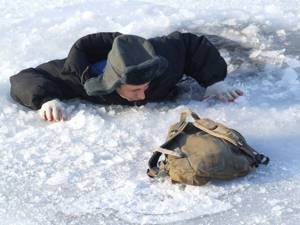
- Try to take a thermos of tea with you when fishing. To avoid trouble, give up alcohol. 90% of all negative situations during winter fishing occur precisely because of alcohol abuse.
- Protect your hands and face from the wind. The winter wind is a treacherous enemy. Sometimes only a fisherman can feel this at home. To avoid frostbite, choose the right clothes, shoes and gloves.
- Do not check the thickness of the ice with your foot, especially if you climbed into the middle of the pond.
- You should try to avoid drilling a large number of holes in one area. Especially when it comes to group fishing.
- A spare set of clothes will never be superfluous. It would be nice to get a set of thermal underwear.
Fishing on the first ice will definitely go without problems if you follow all these precautions. Every fisherman is guaranteed to have a lot of fun during the cold season. The main thing is that the weather is favorable and the bait is appropriate. Good luck, gentlemen, fishermen and don’t forget to make a video of the first day of fishing!
The life of a fisherman
Morning... at about 7 o'clock I receive a text message asking if I'm going to go fishing. It's time to get up and get ready. Outside the window there is the first snow, there is not much of it, but it is there and that means it will be very cold, and today a very weak wind of 4-5 meters is expected. I get ready and remember about the gloves. I have special ones from China for such cases. I took out the steel spikes from the shoe covers back in the spring, when they were driving to the dock. And now I'm ready. Lekha arrives and we head to the pond. They swam in, the fish is silent... generally silent, not even a small fish is walking. Lekha set up the circles and we swam in search of the predator. But the predator was silent. Did NOT chase or peck. The baits were all silent((((I knew that the pike was standing at the bottom along the riverbed, but I couldn’t provoke it to attack((((Even relaxing the hoof with an additional tee with its wounded game could not force the pike to bite(((( I got a “reaper” wob that was ideal for the conditions, clean water, a depth of 3-3.5 meters and a passive fish. But the reaper, with its twitch extremely slow play at the bottom, was not able to revive the pike (((((((((((( That's just ZERO!!!! We sailed to other places in more open areas. Then Lech went on business, leaving me alone in his boat. And I swam. I remembered about the underwater hump and the wind would carry me along it. I installed a Chinese wobble Wlure C549 in 39 color, bright for perch. Well, I've caught perch before and now I decided to try it. I'm swimming slowly. And then I notice the blow of O_o and something small is floating under the water and doesn't want to rise to the surface. Well, I think it's a small evil one. Now I'll pick it up, I pick it up, and there is a perch)) such a good perch))) He walked a little and was caught with a landing net)))
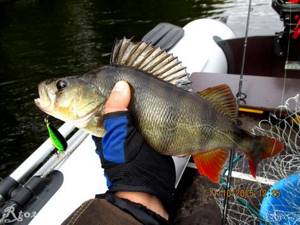
And he sat so weakly that at least he didn’t start tearing him out of the water))))
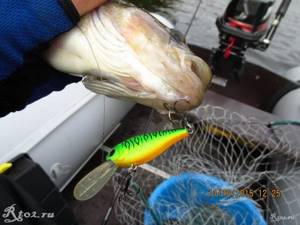
The hillock ended and I decided to return to its beginning and again drift with the wind along it. I swam and swam and still decided to drop anchor and wait and fish slowly. I tried all sorts of different baits, as well as rattlin, but there were no bites. He weighed anchor and continued drifting along the hillock. And near the place where I caught the perch there was another blow and judging by the resistance it was clearly a toothy one))) The pike resisted, but there was no chance at all.
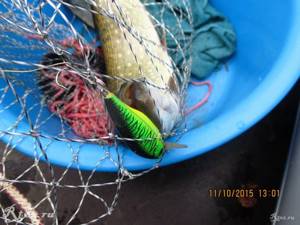
She sat on the front hook and sat well. And all the stray items for the pikes remained in other clothes ((((I had to pick at the answer))) But I still got it without incident)))
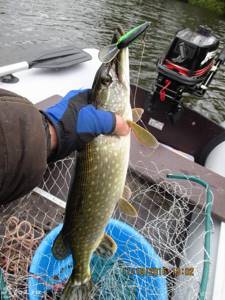
Then came the hours without biting (((The fish were silent, but still I saw the pike coming out behind the fry, but it stood deep in the grass and it was not possible to lure it out.
Then Lekha arrived and we swam to look for the predator. We sailed to the next point and began to throw bait, but the fish were silent. Then I took out the anchor and our boat went with the wind, the bait was led along the dump and through the tubercle. And now Lekha got a peck. The spin is light with a braided line of 0.08 and without a leash O_o Lekha slowly leads it, I’m already catching fish with a landing net))) The wind carries us and brings us to the grass and the pike, apparently seeing it in the muddy water, rushes there. They cling to the grass and stand still. Then the pike comes out and I catch it with a net))) There is another one))
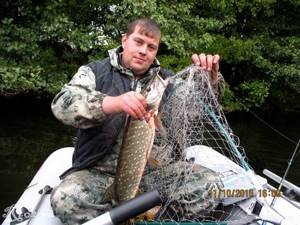
Caught on a Chinese spinner of 4 numbers, which was later torn off(((

Then we swam to a hillock, where I caught perch and pike. I caught another perch near the boat, but it was small and that’s all. The fish didn't bite anymore and we started getting ready to go home.
I weigh the perch.
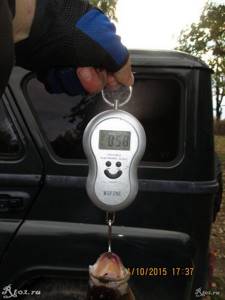
580 grams)))) I haven’t caught these here for a long time)))
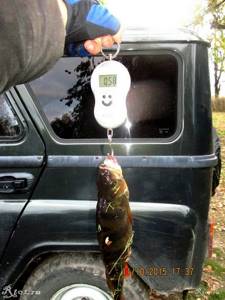
Photo for memory))
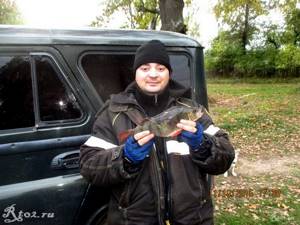
My evil one.

The catch was...
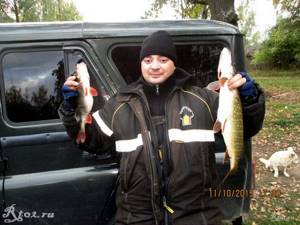
In principle, the fishing turned out to be very interesting, even though it was cold outside (but not for me, I would have been very happy) and the fish almost didn’t bite, i.e. All I had was 3 bites and Lech had one and we caught all the fish)))
Related publications:
- 09/21/2015 Catching pike in the fall in September with Chinese Wlure wobblers from Aliexpress Yesterday I thought for a long time about going fishing or staying at home. I thought about it all evening and at night this thought also haunted me. It's […]
- 07/23/2014 2 days on one toad grass spent two days on one toad plant... the new reservoir was therefore limited by fishing and there was no time to take pictures)) They worked 3fg, Chinese […]
- 09/02/2018 Pike fishing on a swampy lake in early September 2018 Today my brother-in-law and I are on an old lake where I haven’t been on a boat for many years. It was necessary to scout out the situation there and I wanted [...]
Which bodies of water should you start fishing on?

With the increase in ice cover, fishing in such reservoirs becomes unpromising. On large standing bodies of water, fishing should begin in the coastal zone, gradually moving to depth. On rivers, ice forms first in backwaters where there is no current. This is where you need to look for fish, without approaching dangerous areas near the stream.
Fishing in the first snow
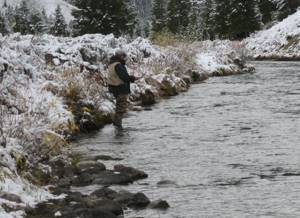
At night the first snow fell in Tomsk, which remained in many areas until almost lunchtime. The morning road to the bank of the Tom River wound through willow trees along a white blanket.
And where there was water in the holes, it froze and it became slippery. It was light all the way to the surface of the river. The slight frost predicted by weather forecasters on TV turned out to be supported by a breeze on the shore, resulting in an unusually uncomfortable situation.
Feet stepped unsteadily on small white stones. But the instinct of approaching fishing in the first snow pushed me forward and forward. Although I understood that I would be alone on the shore, since there was nothing on the path and in the clearing except dog tracks.
With fishing rods on the river
A gentle south wind was blowing from the upper reaches of the river. And I, anticipating good fishing, quickly threw in a spinning “feeder” and a bottom fishing rod, threw some bait on the float at the intended fishing spot and began to wait.
Two days earlier, in the same place, I caught a dozen and a half good dace, equal in size to Pacific herring. I haven't come across such fish all summer. I thought that I could freeze for the sake of such prey. Moreover, the fertile time of autumn fishing is almost completely over.
I figured that I would fish where the bite would be better. I cast a wire rod and warmed myself the whole time, throwing it. I noticed that there was a pull on the spinning rod, despite the wind. The same effect was observed on the bottom fishing rod. But I didn’t approach the gear because the bites were weak.
I didn't want to move because of the extreme cold. However, the main unpleasant surprise awaited me ahead. Suddenly the direction of the wind suddenly changed. It became northern and began to thoroughly permeate my body. The fingers on my hands in thread work gloves were freezing. The strong wind also knocked tears from my eyes.
Lovers of heat and cold
I decided to walk along the shore, stretching my bones and warming myself. I, a young Siberian, did not like the first frost at all. No one else appeared on the shore except me. “These are wise people,” I thought. “They sit there warm, as if they know the fish-biting schedule.”
But then a man appeared, dressed in winter clothes. This figure disappeared into the willows below me downstream. After some time, a woman in a swimsuit came out, went into the river, swam a little in the frozen water, got dressed and sedately walked away towards the city. “It turns out that there are walruses in Tomsk too,” I thought. And I’m cold even in clothes. Shaming myself, I decided to continue fishing.
On the spinning rod there were two small sized ruffs on both hooks. The bottom fishing rod also brought the “commandant” Tom. I saw a very small ruff on the hook. The wire float rod was silent. The worm on the hook was intact, and the maggot was also untouched.
What to do? I check the spinning rods again - again a couple of pipe cleaners are dangling on the hooks. This means that the dace is not near the shore - it sits in wintering pits. The surface of the river, loosened by the wind, drove the fish into a shelter away from the shallow water. Apparently, I needlessly poured out a whole bunch of porridge. It's a shame...
If you hurry, you will make people laugh
Having assessed all aspects of this fishing, I considered that the most reasonable thing in such a situation would be an organized retreat to previously prepared positions. Moreover, the grandmother asked not to stay long. I pull out the bottom fishing rod, where a medium-sized dace curled up alone and fell silent on the cold white shore, which I sent home to the warmth. And then the torture of the inexperienced winter fisherman began. The fishing rod of the five-meter float tackle did not want to fold. Its upper part, carelessly soaked, became stuck and could not move. And the north wind grew stronger and lowered the temperature.
I was in a hurry to get ready and retreat home and made mistakes. Somehow I warmed up the joints with the help of breathing, and in doing so I sank the “bottom” in the heel of the fishing rod. I broke one of the guide rings on the spinning rod and got the line tangled in the wind. But still he got ready, with difficulty stuffing all the equipment into his backpack.
Learning from your mistakes
Raising my head, I saw that a dark-colored Niva was standing opposite me on the shore. The driver looked out the window, carefully observing my manipulations. Noticing that I had finished getting ready and thrown my backpack behind my back, he dashingly turned around and drove off...
It's true what they say is that smart people learn from other people's mistakes, and everyone else makes them themselves. They gain valuable experience by getting into trouble. From now on I’ll be smarter and won’t fill the rod with water in the cold.
Five ruff and one dace - that’s all today’s catch. I decided that this was a normal assessment of my abilities. “Apparently, I don’t deserve any more,” I thought during a warming walk. - You can’t underestimate your opponent! In addition to the river, today I was confronted by frost and wind.”
Vladimir Orlov, Tomsk
Where to Look for Perch? Habitats in First Ice
This is probably the most important question that worries all anglers. In small bodies of water, the perch bite begins immediately after the ice forms. On large reservoirs and reservoirs, the greatest activity of perch is achieved a couple of days after the reservoir is covered with ice. These days, as a rule, most fish adapt to new conditions and intensify their bite before wintering.
Look for perch in shallow water, closer to the shore, near aquatic vegetation, at depths of no more than 3 meters. It breaks into small flocks of up to 10 individuals of the same size and prowls in search of food. The feeding areas of perch in winter are almost the same as in summer: corridors into bays, dumps, flooded snags, reeds, and so on.
3 ways to improve your fish bite!
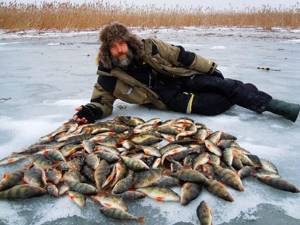
Over 15 years of active fishing, I have found many ways to improve the bite, and here are the most effective:
1. Bite activator . This pheromone additive attracts fish most strongly in cold and warm water. The Fish Hungry bite activator has proven itself to be excellent - Read more…
2. Tackle with increased sensitivity . You should first familiarize yourself with the features of using a particular type.
3. Pheromone baits . They attract the attention of fish, stimulate hunger and cause a schooling reflex, which allows you to collect a lot of fish in one place.
You can get the rest of the secrets of successful fishing for free by reading my other materials on the site.
3 ways to improve your fish bite!
Over 15 years of active fishing, I have found many ways to improve the bite, and here are the most effective:
1. Bite activator . This pheromone additive attracts fish most strongly in cold and warm water. The Fish Hungry bite activator has proven itself to be excellent - Read more…
2. Tackle with increased sensitivity . You should first familiarize yourself with the features of using a particular type.
3. Pheromone baits . They attract the attention of fish, stimulate hunger and cause a schooling reflex, which allows you to collect a lot of fish in one place.
You can get the rest of the secrets of successful fishing for free by reading my other materials on the site.
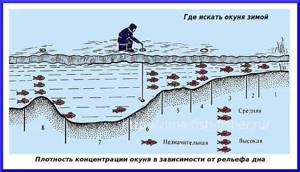
Weather is an important factor in the movement of perch. Thaw - the whitebait stays closer to the shallows, which means that the perch are also close. Well, on frosty days it’s completely the opposite - all the fish roll into the pits. This applies to a greater extent to deaf winter conditions. As for the first ice, all the fish tend to be closer to the shore: there is more food and oxygen here. Although there is a refutation of this, namely, in the cold it is excellent to catch perch in the shallows. What this is connected with is unknown.
